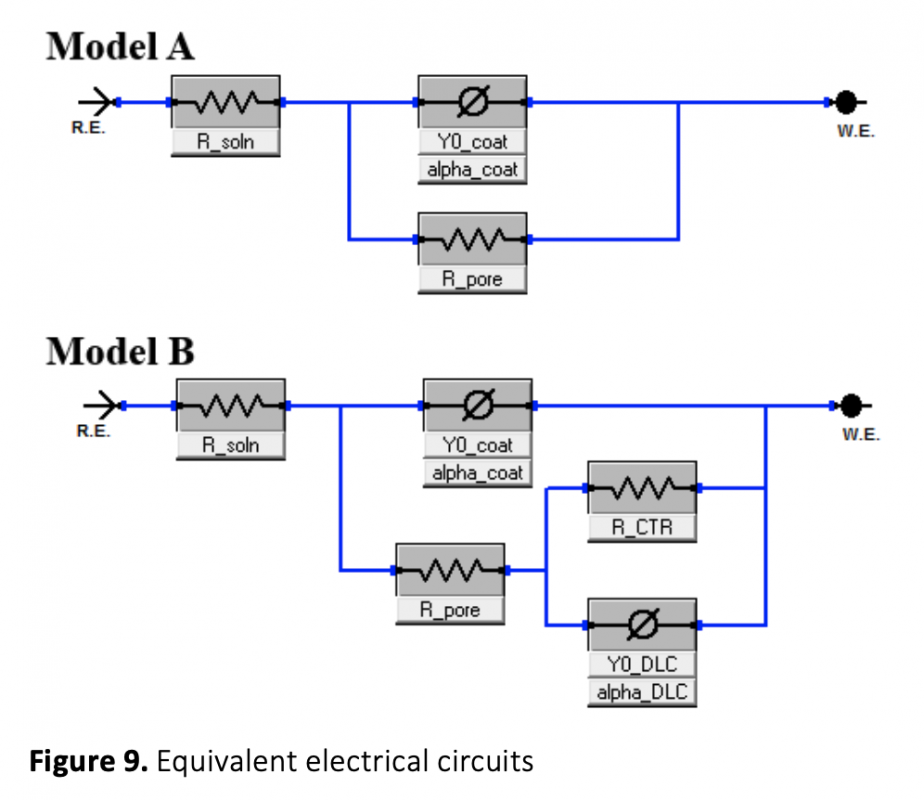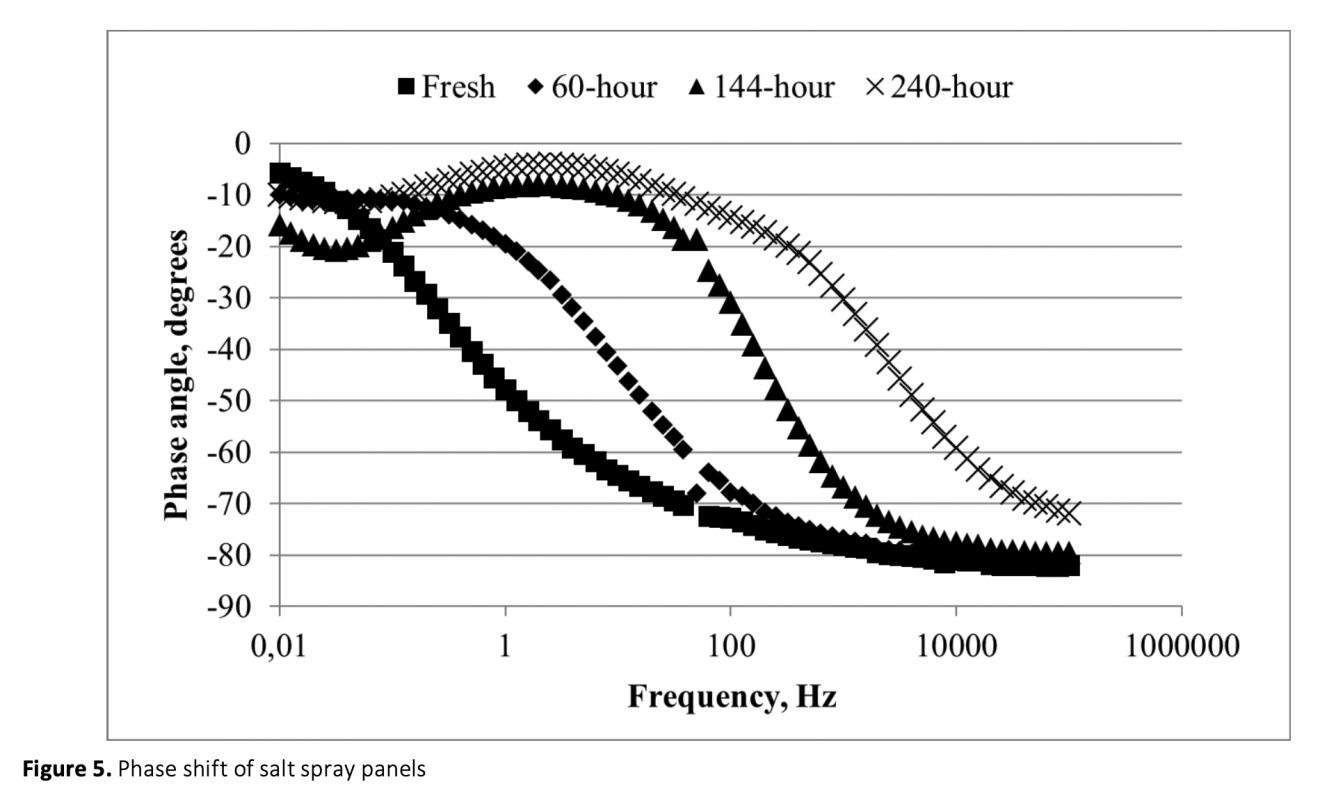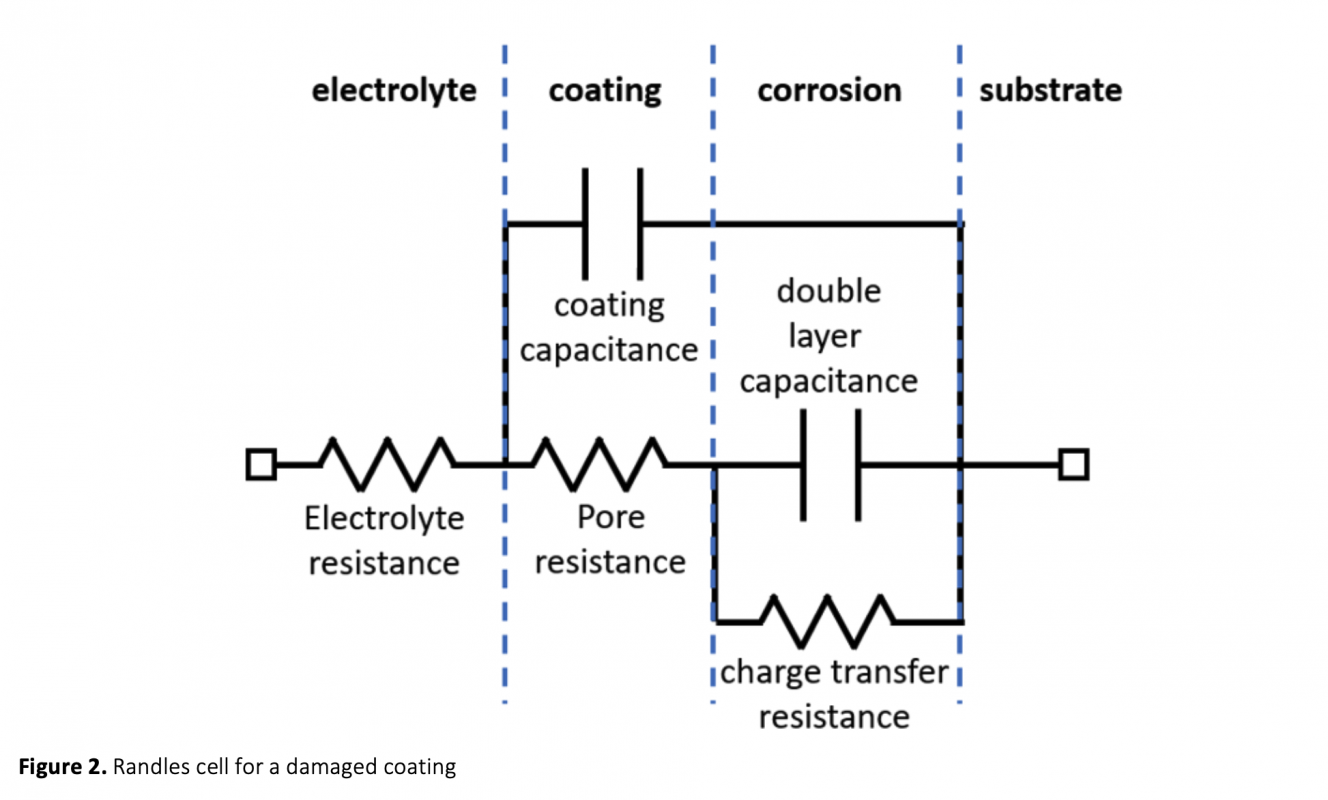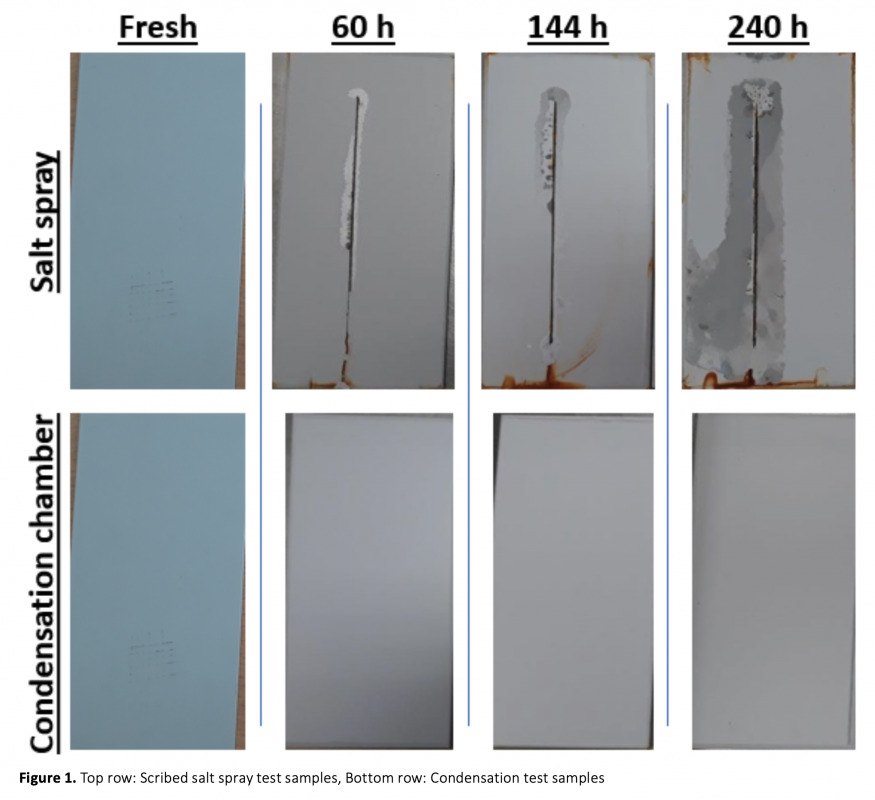Organic coatings are widely employed on the protection of metallic surfaces from the effects of the corrosion. While the mechanisms of corrosion protection by organic coatings are well known, observing these mechanism’s development is not possible with traditional accelerated exposure tests like salt spray (ASTM B-117) and condensation chamber (ASTM D-4585) tests. In these tests, corrosion can only be observed and evaluated after its visual clues emerge, which can be much later than the start of the actual corrosion under the coating, requiring long test durations to differentiate between samples. In this study, progress of degradation on an organic coating during two different accelerated exposure tests was investigated. Measuring electrical impedance spectra (EIS) of fresh and different levels of exposed coatings and modelling them in an appropriate equivalent electrical circuit showed the level of degradation underneath the coating. Although visual inspection did not reveal any corrosion, with EIS, corrosion was observed in just 60 hours of salt spray test exposure while 240 hours of condensation chamber test was not enough to initiate corrosion. Results showed that for the coating system tested, salt spray imparts much higher levels of degradation compared to the condensation chamber test.
Metal yüzeyleri korozyonun etkisinden korumak için organik kaplamalar yaygın olarak kullanılır. Organik kaplamalar ile korozyon korumasının mekanizmaları bilinmesine rağmen, bu mekanizmaların gelişiminin tuzlu sis (ASTM B-117) ve yoğuşma kabini (ASTM D4585) gibi geleneksel hızlandırılmış maruziyet testleri ile izlenmesi mümkün değildir. Bu testlerde korozyon sadece görsel emarelerin ortaya çıkmasıyla gözlenebilir, bu durum kaplama altında korozyon başlangıcından çok sonra gerçekleşebilir ve dolayısıyla numuneler arasında farkların ortaya çıkması için uzun test sürelerine ihtiyaç duyulabilir. Bu çalışmada bir organik kaplamanın iki farklı hızlandırılmış maruziyet testi etkisi altında yıpranması takip edilmiştir. Farklı sürelerde maruziyet görmüş numunelerin elektriksel empedans spektrumlarının ölçülmesi ve uygun eşdeğer elektriksel devreler ile modellenmesi kaplama altında meydana gelen yıpranmayı göstermiştir. Görsel inceleme ile herhangi bir korozyon etkisi görülmese de, EIS ile 60 saat tuzlu sis testinde korozyon başlangıcı gözlemlenmiştir, ancak 240 saat yoğuşma kabini korozyon başlangıcı için yeterli olmamıştır. Sonuçlar test edilen kaplama sistemi için tuzlu sis testinin, yoğuşma testine göre çok daha fazla yıpranma meydana getirdiğini göstermiştir..




Download Article in PDF (806.5 kB)